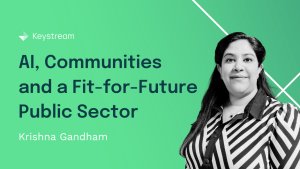29.05.2024
Unleashing the Public Sector’s Digital Potential Through Strengths-Based Hiring
Why the Public Sector Needs a Strengths-Based Approach to Digital Talent
As digital transformation reshapes how governments and public services operate, having the right digital talent is more crucial than ever before. However, the public sector faces an uphill battle in this “war for talent” as it competes with the private sector for a limited pool of qualified candidates.
The old recruitment methods of primarily seeking those with computer science degrees or formalised technical training are no longer sufficient. By taking a strengths-based approach instead, the public sector can tap into a wider, more diverse talent pool and build the future-ready digital workforce it needs.
The Pitfalls of Degree Requirements
Requiring a STEM degree automatically excludes a large segment of potentially qualified candidates. Research shows that top performers in digital roles are differentiated not by their formal education, but by their inherent strengths and traits.
A Gartner study found that curiosity, learnability, drive, and other strengths were better predictors of success in IT roles than technical skills alone. As Stephanie Fuhr, VP Analyst at Gartner, stated: “The focus on skills is outdated and ineffective…skills have a short shelf life in the fast-changing digital world.”
By over-indexing on degrees, the public sector misses out on talented individuals whose strengths make them ideal for digital roles, but who may have non-traditional backgrounds. This perpetuates a lack of diversity and limits the talent pool.
The Power of Strengths
In contrast, a strengths-based recruitment approach expands the aperture. It allows the public sector to consider candidates from all backgrounds and identify those with the inherent traits to thrive in digital roles, such as:
- Problem-solving ability
- Analytical and pattern recognition skills
- Future orientation and vision
- Drive and motivation to continually learn
While technical skills are still valuable, a strengths-based model recognises that these can be taught more readily than ingrained talents like problem-solving. Candidates who possess these core strengths can then be trained on specific technologies and tools.
Benefits for the Public Sector
By widening the hiring funnel through a strengths-based approach, the public sector stands to gain in several ways:
- Access to a larger, more diverse talent pool
- Ability to find “hidden gems” from non-traditional backgrounds
- A workforce better equipped to drive innovation and digital transformation
- Increased workforce diversity, fostering more inclusive policies and citizen services
Additionally, a strengths-based approach allows the public sector to craft enticing employee value propositions focused on opportunities for skills growth, career pathing, and purposeful work. This strengthens the ability to attract and retain top digital talent.
As the digital skills gap widens, the public sector must rethink how it identifies and recruits talent. By shifting to a strengths-based model, governments can build the digital workforce needed to modernise services, drive efficiencies, and better serve all citizens in our digital age.

